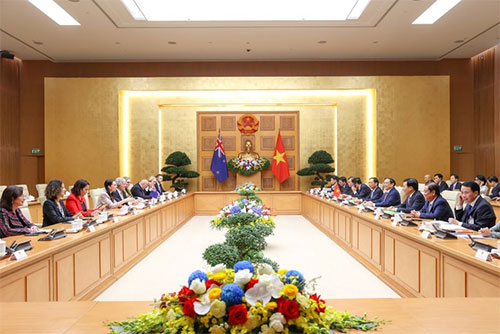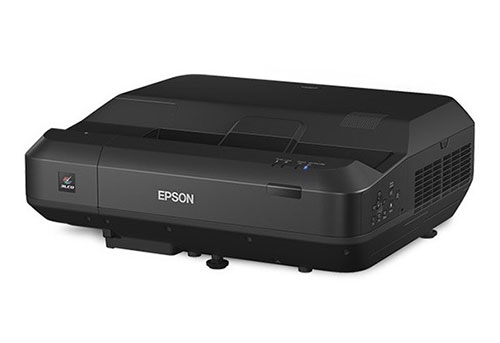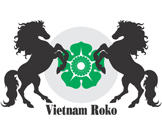In August, the New Zealand Customs (NZCS) and the basic Ministry of Industry (MPI) officially put into use the one -stop trading system (TSW) for businesses, promoting WCO models for Improve risk management and facilitate legal trade. The New Zealand economy has welfare -based welfare and international tourism, while maintaining border security.
In 2012/13, NZCS received 9.7 million international non -international customers, 6.21 million import transactions and 3.48 million export transactions, at the same time revenue of 11,239 billion NZ Dollars. With the basic industry, more than two -thirds of income from the country's export activities, the efficiency of passengers, goods and means of transport for biological security risk management. Learning is being interested by MPI.
Over the past three years, NZCS and MPI have been developing a common border management system (JBMS). JBMS has renewed the border management system of the two agencies and allows the sharing of technologies, data and improvement processes. TSW is an important component of JBMS, and will eventually provide a single channel for New Zealand international commodity businesses to declare information and receive feedback from border management agencies. gender.
Current border management system
All people, goods, and immigration vehicles to New Zealand must be notified to NZCS, most of this declaration is done by electronic messages based on the data model of the Commission Favorable United Nations trade before. Airlines and shipping lines declare information about aircraft or boats, goods, crew and passengers, by messages, including reports on import and export goods.
Information about boats and crews docked into the port has been provided as an email model shared between MPI, port health authorities and New Zealand maritime safety agencies. As for commercial goods, commercial import and exports or their companies must declare more detailed websites for customs clearance, including import and export documents.
The current customs system manages these transactions, identifies vehicles and goods containing risks, management of export and import licenses, collecting information for tax calculation, sending notice notices to warehouses Goods, and record inspection and audit results for analysis and research.
Information on import and export goods is required for biosafety management and food safety risks will also be sent to the MPI system. The importer may have to send a certificate of hygiene and safety (Bacc) to MPI for shipping containers by sea and many imported shipments with this information sent by electronic means or through Fax, and can be added by data from the customs system.
When importing a certain food, the importer needs to send the application via email to the central processing office to be granted a license, and most of the products from animals and plants exported from New Zealand must have. Add an export certificate that the exporter gets through the MPI export certification system.
The current NZCS and MPI systems lack flexibility in meeting the increasing demands that are being managed to manage the risks of border areas, while ensuring the circulation of trade and tourism. The current processes of border management and systems are not really effective, the requirements of data and duplicating processes have slowed down the movement process of the supply chain.
While many products management software for commercial goods are ready to enter information at the "starting point" for users, the data at the "end point" is sent independently to agencies and side Next to the software update may be complicated when there are changes.
A smarter, faster system
JBMS's initiative is to reform the system of two border management agencies and bring a fundamental change in the way NZCS and MPI works in the border areas. The system will help the agencies cooperate more with the processes, data and technology shared together
TSW will eventually provide a single channel for imported, imported and their company to give information required by border management agencies. This will eliminate duplication in data and connections required for the declaration of information to separate systems of agencies.

More valuable information in new messages will be shared by NZCS and MPI to support the protection of national revenue and border security of New Zealand, supporting the management of biological and hygiene All food. Maritime Safety Agency and the National Health Agency of the country will also be accessed information about transport vehicles with the crew, and directly guiding boats through TSW.
New notification format
The notification by electronic means and customs clearance messages and goods is one of the three main changes thanks to TSW. These notifications are based on version 3.2 of the WCO data sample (WDM3), allowing the required information to be maximized via border management agencies. New Zealand border agencies are closely related to the development of WDM3, and are currently the first agencies to use new notification formats.
These new WDM3 notices will eventually replace the current and present notifications or "traditional" notices of exports or ports, import and export goods reports and customs clearance documents. Notifications will be shared by border management agencies, starting from NZCS, MPI, New Zealand maritime and health agencies at the port.
For example, the new WDM3 is based on the import declaration combining customs requirements, information about food safety and hygiene, in the same message. Customers can switch to using WDM3 as introduced, or continue to use "traditional" notifications until new notification forms are forced to use. NZCS and MPI will consult with businesses after December 2014.
Choose a new connection
The second change of TSW is to make new options for customers when sending messages, offering opportunities to reduce transaction costs. Customers can continue to use current message service providers, or use other suppliers to be competitive in this field.
Now, customers can also choose to connect directly to TSW, without having to go to a notification service provider. This can help save costs, depending on the volume of notice and setting costs of customers. Create conditions for customers to have technology knowledge to build and maintain connectivity, and meet security requirements.
For customers with less notifications, TSW Online website is an alternative to current online services. TSW online using the reporting system based on WDM3 and goods clearance messages, currently being operated by NZCS and MPI, while the current service is managed by third party and using versions. Text first.
Self -management registration
NZCS issues customer codes to imported, imported, suppliers of foreign goods, and organizations or individuals wishing to send notifications to the system. These are applicable to regular models sent by fax or email to NZCS to enter data. The third change is that TSW allows customers to manage online to participate in NZCS and MPI code, and maintain their detailed information from which, improve efficiency and response time.
Business support
New Zealand goods import and export enterprises are being supported from the new border management system and from TSW. An important part of the new system is to test a partner category, including a large transport delivery company, a multinational courier, customs and transport software supplier, And online TSW users. The participation of these subjects plays a very important role in the actual testing of direct connection conditions and WDM3 notifications before TSW is expanded to more subjects.
As well as reducing the duplication of data and the need to connect between the two systems, the capabilities of customers in providing more details of the details before the goods and vehicles arrive, the organs. Border management may confirm the customs status to support the plan. Over time, the increase in the notice of WDM3 will be more and the process of customer information is formed, these customers comply with the border management requirements and less risky will be less risky. More interventions.
Benefits broader
In New Zealand, TSW will allow more information to share with business partners, such as warehousing businesses at the port and carriers, to support logistics plans. In the long -term goal, TSW establishes a platform to facilitate trade through sharing data between countries, the goal of both WCO and the Asian -Pacific Economic Cooperation Division ( APEC)
The JBMS program is an important factor contributing to the "better public service" goal of the New Zealand government with online services.

Figure H1: Choose JBMS connection
According to WCO News magazine in October 2013
According to Luong Ngoc.
Source http://www.customs.gov.vn/









